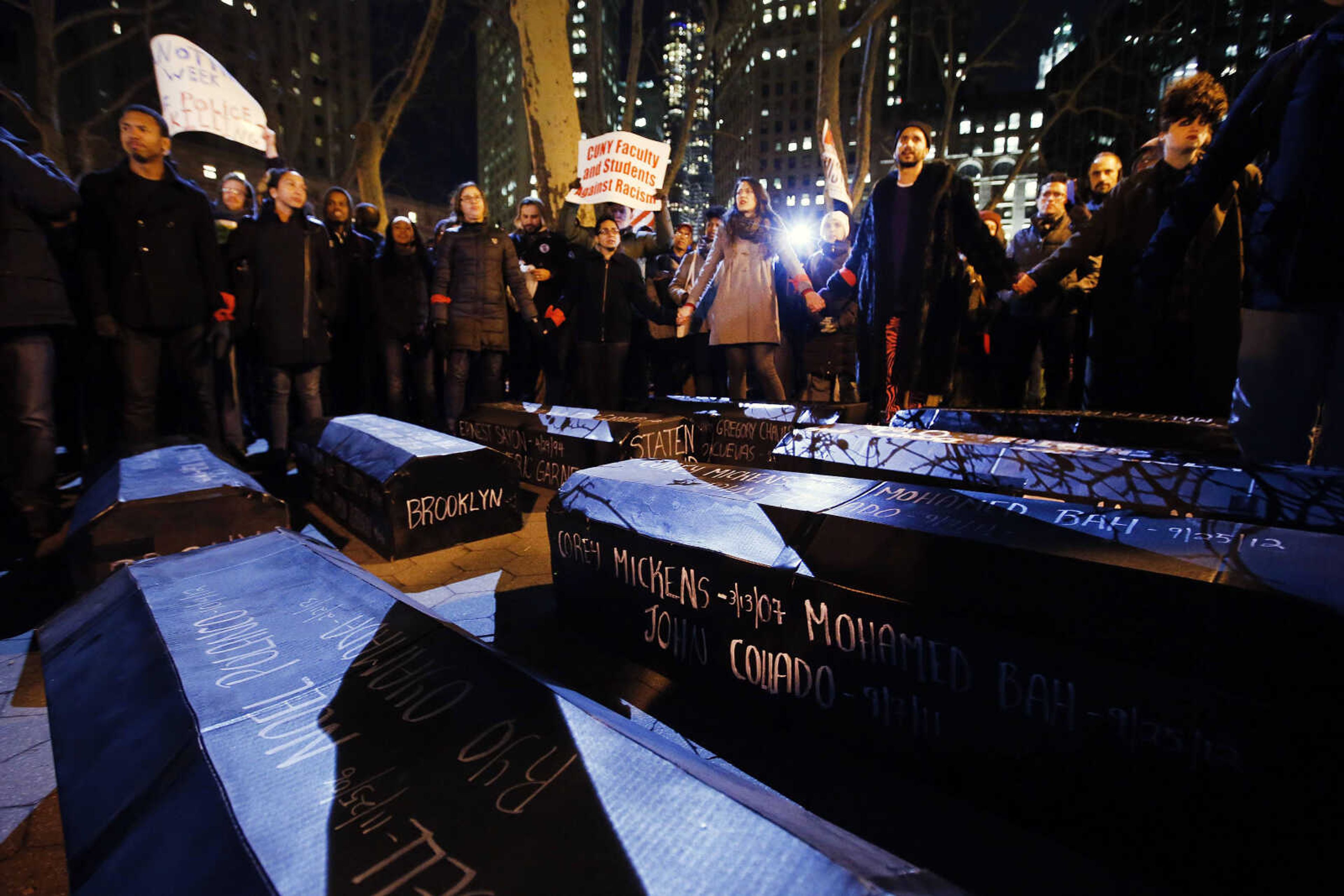Chokehold death sparks questions on use of force
People all over the country have been talking about the July 17 death of Eric Garner during an attempted arrest by a New York City police officer. An amateur video shows officer Daniel Pantaleo, who is white, putting an unarmed Garner, who was black, in an apparent chokehold, a maneuver that contributed to the 43-year-old man's death, The Associated Press has reported...
People all over the country have been talking about the July 17 death of Eric Garner during an attempted arrest by a New York City police officer.
An amateur video shows officer Daniel Pantaleo, who is white, putting an unarmed Garner, who was black, in an apparent chokehold, a maneuver that contributed to the 43-year-old man's death, The Associated Press has reported.
On Wednesday, a grand jury ended the criminal case against Pantaleo, 29, after deciding there wasn't enough evidence against him.
Between that and a St. Louis County grand jury's decision not to indict officer Darren Wilson in connection with the Aug. 9 shooting death of another unarmed man, Michael Brown, 18, in Ferguson, Missouri, questions have been brewing over how much force is appropriate when it comes to detaining unruly suspects.
"Essentially, you, as a police officer, are allowed to use the same level of force that someone is presenting to you, and could possibly go one step higher depending on what the next step is," said former Cape Girardeau police chief Carl Kinnison, who now serves as director of Southeast Missouri State University's Law Enforcement Academy.
Levels of force range from an officer merely being present all the way up to lethal force.
"Typically, it depends on the situation the officer is in; you may go to a very minor call that ends up being a major incident, where all the way to the use of deadly force would be necessary," Cape Girardeau County Sheriff John Jordan said. "Now, we've had very few of those situations in my entire career, where someone had to use deadly force. It has happened here in Cape Girardeau County, but it's not very often that it occurs, and typically there is something major going on when those types of incidents occur."
Kinnison said at the law enforcement academy, future officers learn a continuum that begins with passive resistance, graduates to active and finally becomes aggressive. Officers also learn what to do when faced with those circumstances.
"We do try to keep the training in some areas pretty generic, because a lot of agencies have different policies. So we don't want to train someone that is going to an agency with some type of contradictory policy there," Kinnison said.
At the Scott City Police Department, Mace and Tasers are found on officers' belts, while extendible batons are optional.
"A lot of people don't really like going with the baton, because if you're in a scuffle with someone, there's certain areas of the body that we're taught to strike, but if you're in a scuffle with somebody, those target areas are hard to hit and could cause a lot of damage if you don't do it right, so a lot of guys will choose not to carry an extendible baton," Scott City Police Chief James Dodd said.
Scott City officers may use lethal force if their lives are in danger and their reaction is justifiable enough that they could defend it in court, Dodd explained.
Cape Girardeau Police Chief Wes Blair said his officers follow state laws governing use of force.
The Cape Girardeau Police Department does not use chokes to take down suspects, because it's too easy to crush someone's windpipe, Blair said.
Officers rely heavily on verbal communication where possible.
"It's always easier to talk somebody into jail than to force them into it," he said.
Physical force poses a risk not only to the suspect, but also to the officer involved and any bystanders who might be in the area, Blair said.
"Anytime that you get into a use-of-force situation ... you run the potential of getting your officers hurt and getting members of the public hurt," he said.
Jordan and Kinnison also said communication is always the preferred option.
In the case of an officer using more force than necessary, Blair and Jordan mentioned how diligently the police department records acts of force.
"Any use of force that an officer does, we do a use-of-force report on it. ... This is a good way to identify an officer early if he does have a misunderstanding about use of force or" -- Blair paused, rapping his knuckles against the wooden top of a conference table -- "just a rogue guy that wants to beat on people."
Jordan said senior officers monitor their less experienced colleagues closely and often critique those who appear to have overreacted.
Reporter Emily Priddy contributed to this report.
smaue@semissourian
388-3644
Connect with the Southeast Missourian Newsroom:
For corrections to this story or other insights for the editor, click here. To submit a letter to the editor, click here. To learn about the Southeast Missourian’s AI Policy, click here.








